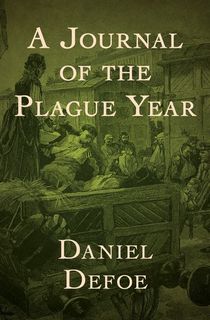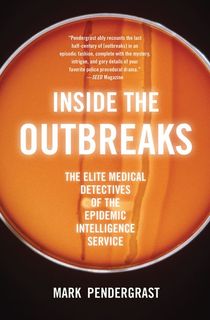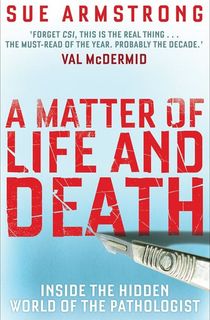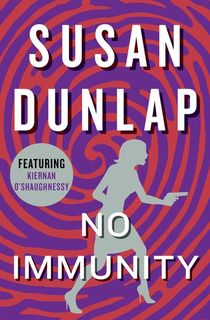Even though most coronavirus books haven’t been written yet, there are still plenty of books about disease, pandemics and epidemics, all of which can help people understand what’s happening right now. After all, humans have been surviving infectious diseases for as long as we’ve existed. COVID-19 isn’t the first disease to travel around the world, and it probably won’t be the last new virus to enter the United States.
To help people understand more about how diseases spread and how humans have dealt with them in the past, we’ve dug into books that cover everything from the plague to yellow fever to ebola. Here are 8 of our favorites.

A Journal of the Plague Year
Daniel Defoe is most famous for authoring Robinson Crusoe, but his fictionalized account of the 1665 London plague—which he lived through himself as a child— is also well worth reading. Like Crusoe, this work is an early example of realistic fiction, blending fantasy and journalism to create a compelling account of 17th-century London.
Though the effects of plague were far more deadly than coronavirus is expected to be (modern medicine and general health has improved quite a bit over the past few centuries), the hysteria that comes with infectious disease is sure to feel familiar.

Maladies and Medicine
If you want to feel better about your chances of surviving coronavirus—and understand why plague outbreaks used to kill around 66 percent of those it infected, compared to the current .8-3.8 percent of infected people coronavirus is estimated to kill—this discussion of medical practices in early modern England (1540-1740) should do the trick.
This nonfiction book closely inspects a time when doctors thought tooth cavities were caused by tiny worms and smallpox was an effect of “an inflammation of the blood.” Featuring firsthand accounts from doctors’ notes, diaries and court records, it’s a fascinating and frightening look at life before hand sanitizer.

Bacteria and Bayonets
Nothing underscores the CDC’s guidelines for coronavirus prevention and treatment quite like realizing that disease is responsible for more military deaths than any army ever has been. Coming into contact with new microbes has regularly been a factor in battles, from the conquest of Canada in 1812 to US soldiers battling malaria in the South Pacific during World War II.

Inside the Outbreaks
If you’re wondering how exactly government programs investigate and protect us from deadly pathogens and viruses like coronavirus, you should read Inside the Outbreaks. The book is a history of the Epidemic Intelligence Service, which has existed since 1951.
EIS successfully battled polio, cholera and smallpox (among other diseases), has members who have gone on to work at the CDC and World Health Organization, and still travels the world to protect us from new threats. In other words, these people are pretty much the closest thing we have to actual superheroes.

The Secret of the Yellow Death
At the end of the 19th century yellow fever had been plaguing the Americas for more than 100 years, but doctors still weren’t sure how it spread. A Cuban doctor named Carlos J. Finlay theorized it was carried by mosquitoes, but this would not be confirmed for another twenty years. The Secret of the Yellow Death follows Walter Reed and a group of U.S. Army doctors who traveled to Cuba in 1900 to study yellow fever and confirm Finlay’s work.
While this nonfiction book is geared toward a young adult audience, the thrilling true story, based on real letters and reports, is gripping enough for any reader to enjoy.

A Matter of Life and Death
Pathologists are the people who recognize new diseases, such as AIDS, SARS, bird flu, and now coronavirus. This nonfiction book dives deep into the individuals doing this life-saving detective work, including a pathologist who finds out she has the very disease she is studying. There is also an interview with Bill Bass, the doctor who invented the “Body Farm,” which is a research center that studies decomposition—and inspired the crime fiction book of the same name by Patricia Cornwell.
“If you’re interested in criminal investigation, this is the must-read of the year. Probably of the decade.” —Val McDermid, author of Insidious Intent

The Hot Zone
Ebola is a terrifying virus with an extremely high risk of death. There have been multiple outbreaks over the past few decades, though they are usually contained on the African continent.
But in 1989, a research lab just 15 miles from Washington, D.C. received a shipment of 100 monkeys that turned out to be infected with a relative of Ebola called Reston virus. The actions taken upon this discovery make fiction books about apocalyptic plagues seem boring—that’s because truth is often scarier than fiction.

No Immunity
For those of us who would prefer to read a disease book with a little more mystery, adventure and dialogue, we suggest No Immunity, the fourth book in the Kiernan O’Shaughnessy Mysteries series. According to The Washington Times, “Susan Dunlap is the leading proponent of gutsy, nontraditional women who nimbly tread in he-man territory”—and that’s on full display here.
Two children in Panama have died from an unknown and highly contagious disease. The only person who can stop the epidemic is Kiernan O’Shaughnessy, and she's already failed at stopping a similar disease in Africa. This time, the disease has travelled to Nevada—and if she can’t stop it, the world could be on the edge of catastrophe.
This post is sponsored by Open Road Media. Thank you for supporting our partners, who make it possible for Early Bird Books to continue publishing the book stories you love.
Featured photo by Free to Use Sounds / Unsplash

